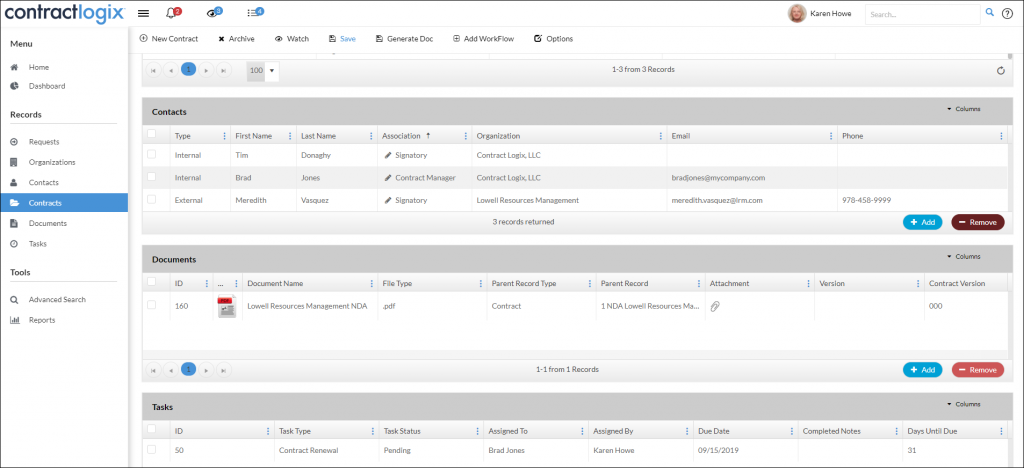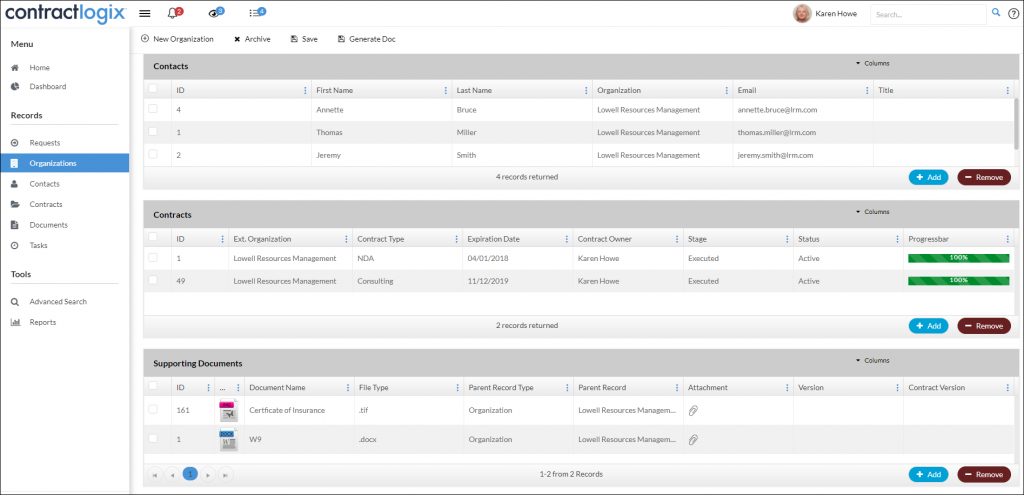Contract Data Relationships: How to Focus on What’s Important
By Karen Howe, Training Director at Contract Logix
This past weekend, I spent time with family up on the Maine coast. From our back deck, we had a gorgeous view of the rocky islands of the inlet, the cottages on the far shore and in the distance, the Atlantic Ocean. It was breathtaking. As we sat and talked, we took turns passing around the binoculars, each of us focusing on an aspect of the scene before us. For me, it was the quaint cottage across the way, perfect for an artist or poet. For my Mom, it was the osprey nest just out front. And for my brother, the lobster boats chugging back and forth, pulling traps. Each of us looking at the same scene – but each seeing something different in the view. And that got me thinking about how Contract Logix’s Contract Management System enables you to see your contracts and contract data relationships in so many different ways.

Download Top 10 Best Practices for Contract Management to learn more.
Limitations of Folders and Spreadsheets
Traditional methods of maintaining contracts using folders and spreadsheets are outmoded. Think of it like this – if you’re storing contracts using a folder system, you might have the documents organized by type (a folder for Non-disclosure Agreements, one for Master Services Agreements, etc.) or maybe by contracting party (XYZ Corp. agreements, etc.) or maybe by both. If you keep data about your contracts (key dates, terms, or other relevant information) in a spreadsheet to track them, then that has to be maintained separately from the documents. The limitations of the folder structure and/or spreadsheets (whether designed by yourself or someone else before you came along) make it difficult to view the documents and data (or more specifically the contract data relationships) in any way other than as originally conceived.
Built-in Flexibility to Focus
Contract Logix’s Contract Management system does it differently. By maintaining all data and documents in the same place — a cloud-based central repository — and focusing on the relationships between different contract data points, users have the flexibility to view their contracts in a variety of ways, depending on their needs at the time.
For example, you pull up the record for a non-disclosure agreement like the one shown below, and you can see which contacts (individual stakeholders) are involved, preview the signed NDA document, and even see associated tasks.

Alternatively, you select an organization and can see the contacts belonging to that company, all the contracts your company has with that organization, and any supporting documents (like insurance certificates or W9 forms).

Or, you open up the contact record for a certain individual and can see which contracts they have been added to and which tasks they have been assigned.
You get the point. Everything is related and there are numerous ways to view the same data.
Takeaway
A contract is so much more than a signed piece of paper. It’s all of the related information – the document certainly, but also the organizations and people involved in the negotiations, the data points that enable you get actionable insights, the tasks involved in getting from draft to execution, the key dates to track renewals and expirations. Being able to see the whole but focus on the parts makes for a powerful contract management tool that allows you manage your contract data relationships however you want.

